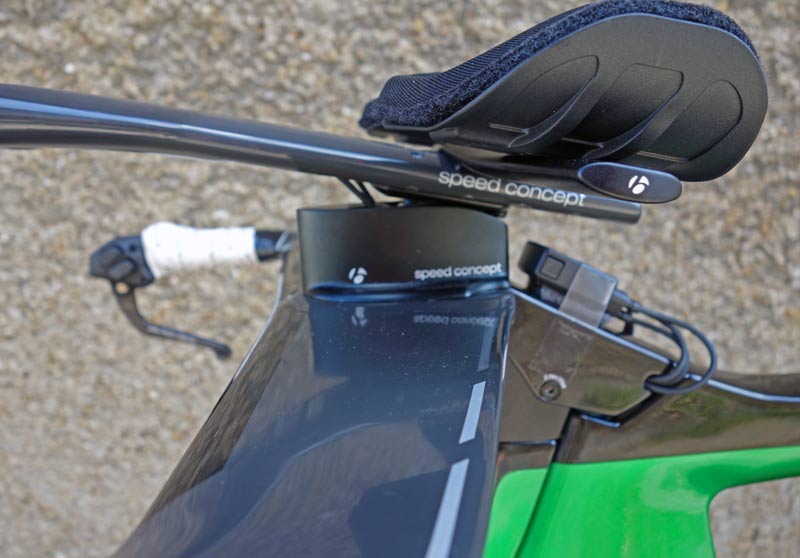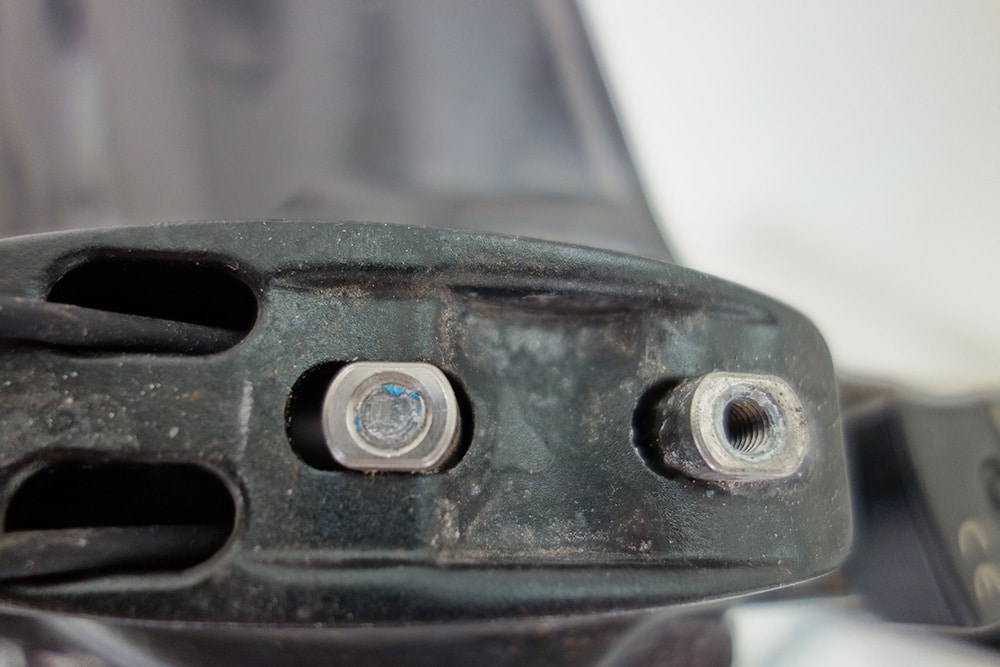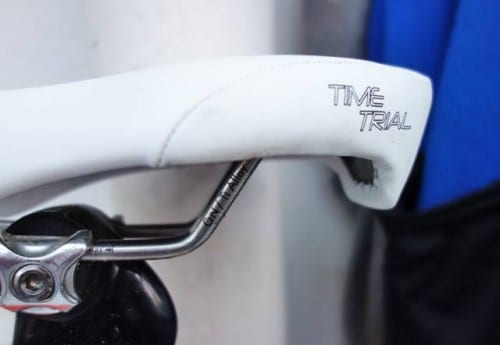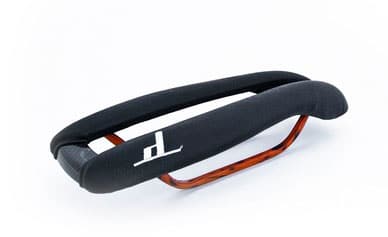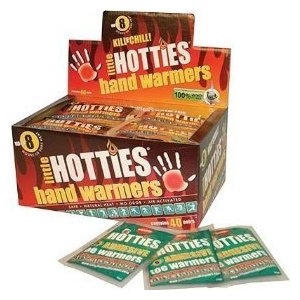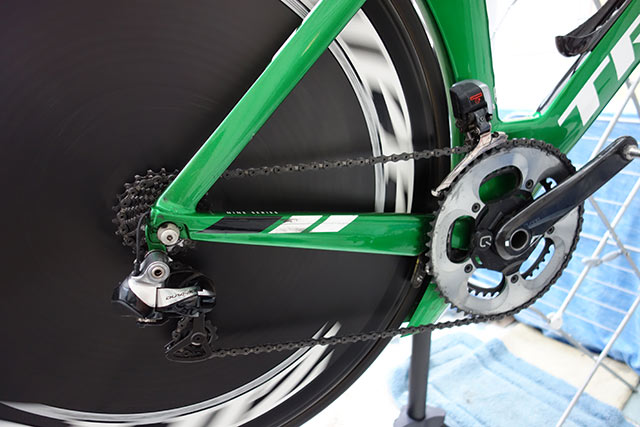A rear mounted bottle cage is generally a good aerodynamic place to carry an extra bottle. For long distance riding, it is a good option, though a little awkward (and un-aerodynamic) to get from behind saddle.
One challenge with 100 mile time trials is working out how to carry enough fluid. I’ve done 100s on two bottles, but often felt it was insufficient and suffered as a result. A rear mounted saddle is a good place as it is generally out of the wind.
An important note is to make sure the bottle is secured. I have had experiences with bottles ejecting themselves. Make sure you test over suitably bumpy roads – before the big race!
Most aerodynamic position for a bottle
I’ve seen quite a few aero tests and suggestions that the optimal position for a water bottle is in this order
- Between the tribars at the front of the bike (Tribar mounted waterbottle)
- Behind the saddle (rear-mounted)
- On the downtube
- On the seat tube
The first two have little aero drag. Some claim that having a bottle between the arms on the tribars reduces aerodrag. On the downtube, aero drag could cost 45g for a standard water bottle (according to tri-radar)
Testing water-bottles depends on how the bottle interacts with the frame and rider. Some TT bike designs have been specifically designed to make the water bottle more aerodynamic.
Rear mounted bottle cages are also said to be quite good in limiting aero drag, so I thought it would be good to get one. I did use one many years ago, it might have been my first 100 mile TT in 2005. But, the bottle jumped out and I never got to drink it. I think I threw away in disgust and have never revisited rear bottle mounts until a few years ago
Bontrager Race Lite Rear Cage Holder
I bought a Bontrager Race Lite Mount rear mounted bottle cage. It cost £35 from a local bike shop. The advantage is that you can have two water bottles or one in the middle. It also has two places to screw in CO2 cylinders.

I have chosen to have just one bottle cage. It’s fairly easy to set up and fairly sturdy. (It weighed 170gram with one water bottle.
The difficulty I had is that with the Adamo saddle, there is limited room to fit. This means I had to have it at an angle of 45 degrees. I would preferred to have it at 90 degrees because the bottle would be less likely to fall out.
This is a drawback of the Adamo saddle. – A comfortable shape for long-distance timetrialling, but you have to be careful which water bottle system you get.

Since I first posted this blog, I have got a new saddle. A Dash saddle, which still has a long tail making it hard to get a bottle vertical.
However, it is quite aerodynamic and easy to set up.
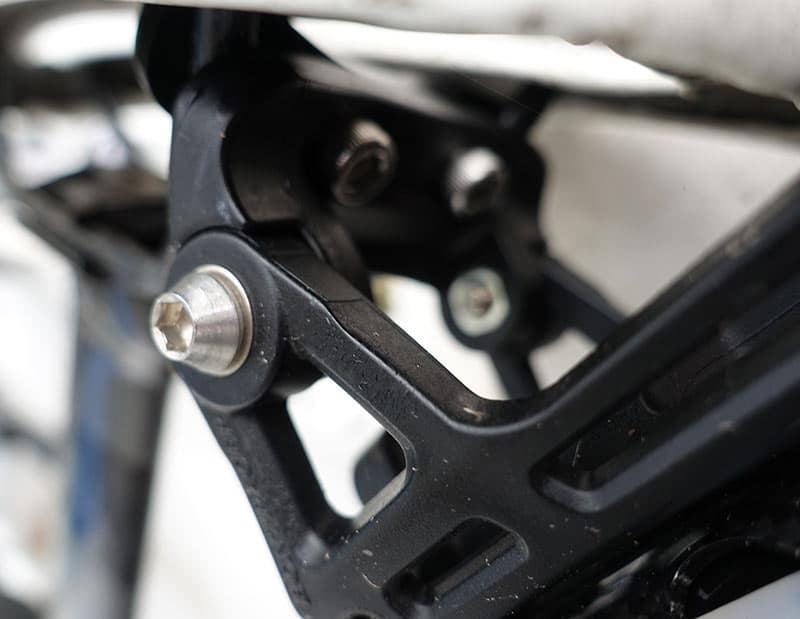
My concern about use long-term is that it is all held together by four Allen bolts. Two gripping cage to saddle. And two holding angle of the cage. I am testing in training, and its held up, though there is some small degree of slip. They really should have bolts on the other side of the side screws. You want to check pre-ride.
Strong Grip bottle cage for rear set up
I chose a Gorilla X-Lab water bottle cage and ditched the Bontrager because it has extra gripping power. I think this is important for rear mounted bottle cages at an angle. The risk of bottle ejection is quite high. I have used the Gorilla X-Lab bottle cage for many races and it is very reliable in having a strong grip. In fact, sometimes, you have to get used to the stickiness of the bottle cage.
By contrast the first time I used this Bontrager Rear Bottle Mounted Cage the bottle ejected 5 miles into the ECCA 100 mile, 2014. It is relatively cheap compared to others)
Xlab Delta 400

I have also been testing this XLab Delta 400, hoping it would be better than the cheaper Bontrager version. Firstly, it is quite hard work to set up. You need a suitable sized spanner to hold locking nut in place. However, this time of set up gives a very strong and sturdy set up (more reliable than Bontrager). The angle of cage is also adaptable, though it is limited by my saddle.

It is a pretty secure system. If you tighten to correct torque, you will have no problems.
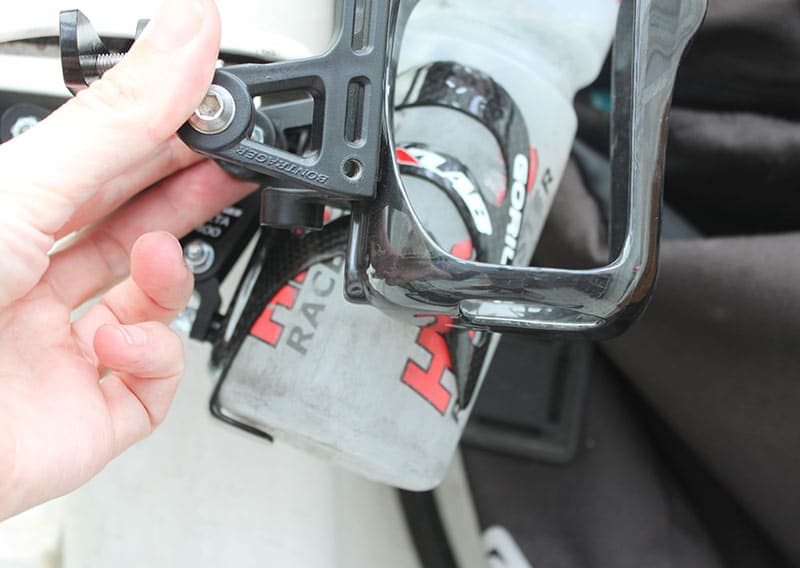
Unfortunately, compared to the Bontrager it holds the bottle lower down, exposing more of the water bottle to the air. So although it is lighter, better built and a lot more expensive, I am better off using the Bontrager because it will be more aerodynamic.
X-Lab 400 rear mounted at Wiggle £79. –
The X-Lab Super Wings seems to hold up bottles higher.

Profile Aqua rear mounted bottle cage
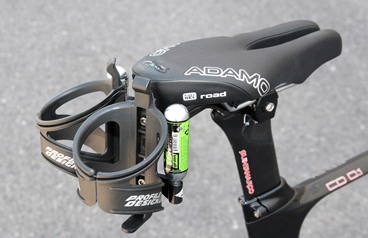
This has a different design and works well with the popular Adamo saddles. It is similar to the Bontrager system, but has a different fitting system which makes it easier to fit
- Profile design £.9948 at Wiggle
Stopping bottles jumping out
- Firstly have the bottle cage at 90 degrees, don’t risk anything like 45 degrees – even if it is easier to get to.
- Choose a water bottle which is tight-fitting on the bottle
- Be wary of using carbon fibre bottle cages which are more prone to breaking. You’re better off choosing a standard sturdy bottle cage rather than a 17gram special lightweight.
- If you think it might fall out, try putting an elastic band around the bottle. This will make the bottle wider and more sticky. (Though it didn’t work for me!)
Other points about using rear mounted bottles
- In long distance time trialling – hydration generally outweighs any aero penalty.
- Weight isn’t such a big issue.
- Another issue is that in the race, you can forget to drink. When you are so absorbed in the effort of racing, it can be hard to pick up a bottle from behind the seat. This is another advantage of water bottle between the tribars – you can’t forget about it because it’s always in your face. If you do have a bottle behind the saddle make sure you don’t forget about it.
- Test before a race! Go for a ride over bumpy terrain and see if your bottle stays in. If you test in a race you might find yourself one or two bottles down.
- Always be prepared for mechanical mishaps. Even if you are carrying three bottles, ideally you will have a spare one by the side of the road, just in case one does fall out.
- Make sure you tighten the bolts to the correct torque. This will make it less likely to fall out.
In triathlon community, the X-Lab rear mounted bottle system has good reviews. It offers quite a comprehensive choice of carrying options. Its design also means it fits nearly any saddle.
I was put off by the cost £69.99. But, if you are going to be doing a lot of long distance cycling, this may be a good option.
- X Lab rear mounted bottle at Chain Reaction Cycles
Conclusion
I’m using Bontrager water bottle cage, but I’m not entirely happy with it. It’s not 100% secure and I had to buy alternative water bottle cage (Gorilla). But, it does OK in aero testing.
Related








